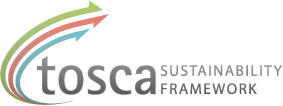Eco-efficiency Assessment (EEA)
By Emma Ringström & Johan Widheden
When comparing new products with competing products on the market, environmental as well as economical aspects are necessary in order to evaluate the market acceptance of the new products and the possibility to gain market shares. Also, in order to know where to put efforts and resources to acheive the most environmental gain, it is vital to compare the reduced environmental impact with the accompanied costs of the actions. This is when eco-efficiency becomes operational, but how can a business make use of the concept of eco-efficiency?
Eco-efficiency assessment is a methodology companies may use in order to evaluate their products or services from an environmental and financial perspective. The methodology is used to compare two or more products, processes, investments or other activities in order to find the most eco-efficient alternative. According to the ISO standard an Eco-efficiency assessment is based on a Product Value Assessment and an Environmental Assessment.
The environmental assessment is often based on Life Cycle Assessment (LCA) or the a Life Cycle Inventory, LCI. An LCI is a compilation and summation of environmental impacts from all stages in the life cycle of a product or service – from extraction of resources, through production and use to reuse, recycling or final disposal.
The Product Value Assessment can include quality cost or profit aspects of the products and should if possible also be made from a life cycle perspective, using a method such as Life Cycle Costing (LCC). LCC is a method which assesses the cost performance of a goods or product from an individual perspective, e.g. producer or customer, over the entire life cycle.
The potential impact on human health or the environment caused by the inherent properties of chemicals is one of the most important aspects when comparing chemical products. These aspects are usually not covered by the LCA and in order to include these aspects in an Eco-efficiency analysis, it can be valuable to conduct an additional screening Chemical Risk Assessment.
Common for all eco-efficiency studies is that different products or processes are compared from a life cycle perspective. Important to note is that the result does not show whether the products compared are sustainable or even environmentally friendly. It shows only the economical and environmental interrelation between the compared products, with no intention of assessing how sustainable the products are in a long term perspective. An eco-efficiency analysis also serves well as a basis for decisions regarding new investments or for optimizing product performance in the product development processes.
Further on methodology
An international standard for conducting eco-efficiency assessment is under development (ISO/DIS 14045).
Deeper description of Eco-efficiency Assessment based on the draft of the standard.
